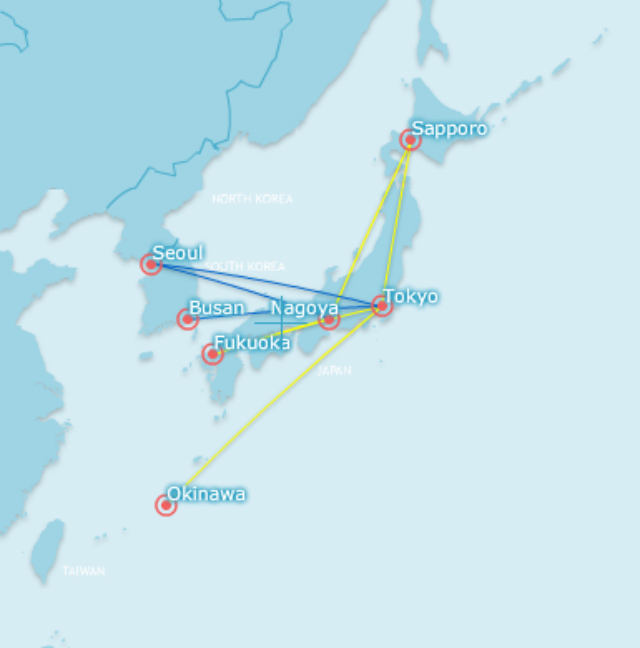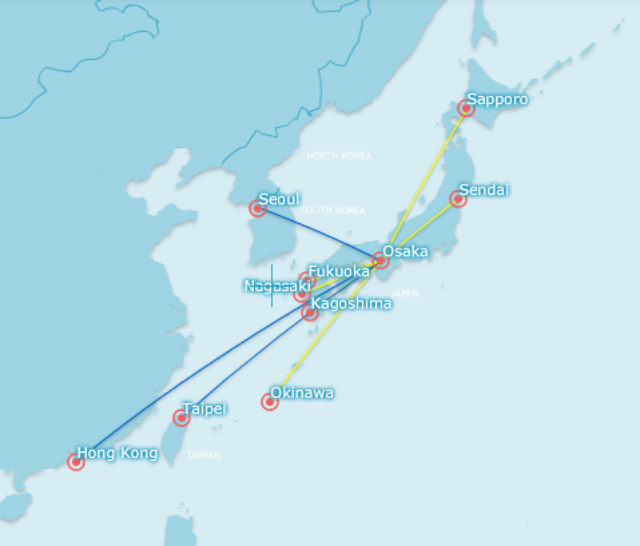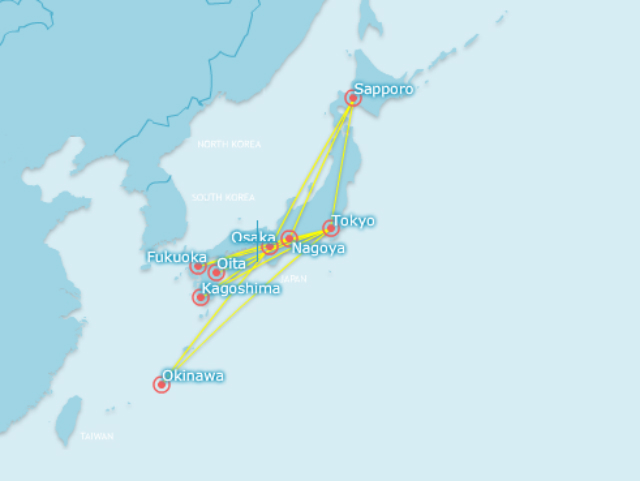Barely 11 months after the launch of AirAsia Japan, AirAsia and All Nippon Airways (ANA) are on the brink of dissolving their partnership.
The two carriers - one a traditional full-service Japanese operator and the other Asia's most profitable low-cost business - seem unable to reconcile differences in their operating styles.
AirAsia has even come out to say that the partners have "a difference of opinion in management, most critically on the points of how to operate a low-cost business and operating out of Narita". The joint venture carrier has also not been able to manage costs, and it does not rule out a dissolution, it adds.
Keeping costs low is key for low-cost operators, and something that AirAsia prides itself as being able to do well. Chances are it is struggling to change the ways of legacy carrier ANA, especially as AirAsia Japan's management team, including its chief executive and chief financial officer, comprise mainly of ANA staff, analysts say. ANA holds a 51% stake in AirAsia Japan.
Operating out of Narita airport can also be problematic, especially for a low-cost carrier.
Narita is one of the world's most expensive airports and besides slots constraints, there is also a night curfew, which greatly limits aircraft utilisation - a key for LCCs to keep costs low.
ANA however remains adamant about having a low-cost operation based at Narita, not because it needs AirAsia Japan to act as a feeder to its full-service operations, but because it believes more LCCs will fly to Narita, and it wants to have the first mover advantage.
China's Spring Airlines, for one, is awaiting approval from the Japanese authorities for a local air operator certificate, and plans to operate out of Narita.
"AirAsia's global strategy has been to operate out of secondary airports, so operating out of Narita doesn't fit," says Ravi Madavaram, aerospace consultant at Frost & Sullivan.
AirAsia Japan network

Source: Innovata Flightmaps Analytics
He adds that since ANA also has a 38.6% stake in Peach Aviation, which is based at Kansai International Airport's dedicated low-cost terminal, it is thus reluctant to have another operation at Kansai. Kansai has significant strengths as an LCC base: it is open 24h, with no slot constraints, and boasts cheaper landing and parking charges.
What AirAsia Japan can look forward to is Narita's commitment to build a new low-cost terminal, expected to be completed by March 2015. Whether the carrier will still be around, with its parents willing to let it bleed until then, is another story.
AirAsia Japan recorded a net loss of ringgit (M$) 67 million ($21.4 million) in the quarter ended 31 March. Its domestic and international load factors stood at a disappointing 63.9% and 61.9% respectively.
In a bid to boost load factors, it brought forward the launch of its second hub at Nagoya airport in March, but it seems that the carrier is still trailing behind Peach and Jetstar Japan. Both carriers have been able to keep load factors above the 70% mark - Peach recorded 78.9% in fiscal year 2012, while Jetstar Japan's May figure was 75.8%.
"Peach has a good stretch of market to South Korea, Taiwan and Hong Kong and this is important as it brings inbound international traffic, which often brings higher yields than domestic operations to its network, and compensate it for the competition in the domestic markets," says Richard Wu, a senior lecturer at University of New South Wales' school of aviation.
Peach Aviation network

Source: Innovata FlightMaps Analytics
"Jetstar Japan is playing a similar card that while it extends its domestic network, it also connects with Jetstar Asia and Jetstar on international routes. AirAsia is not responding quickly enough in network expansion."
AirAsia Japan operates a fleet of four Airbus A320s to four domestic destinations and Seoul. It competes on routes from Narita to Fukuoka, Sapporo and Okinawa with carriers such as Jetstar Japan, ANA, JAL Express and Skymark.
Flightglobal data shows that AirAsia Japan operates seven, 14 and 21 weekly flights to Okinawa, Fukuoka and Sapporo respectively, far fewer than the 20, 27 and 40 weekly flights offered by Jetstar Japan on the same routes. Besides its peers, there are also tier two carriers such as Skymark, Air Do and StarFlyer it has to compete with.
Jetstar Japan network

Source: Innovata Flightmaps Analytics
Jetstar Japan has 12 A320s and plans to grow its fleet to 20 by end-2013. While it started operations out of Narita last July, it also swiftly set up a second base at Kansai. Analysts however say that the carrier has been offering promotions to attract more passengers.
Peach has a brand name that the Japanese are familiar with and a fleet of eight A320s.
ANA's challenge, therefore, is to get its strategy right.
"Having two airline subsidiaries for ANA is one too many. This has - or will - lead to brand dilution and also increase its costs," says Madavaram.
Source: Air Transport Intelligence news



















